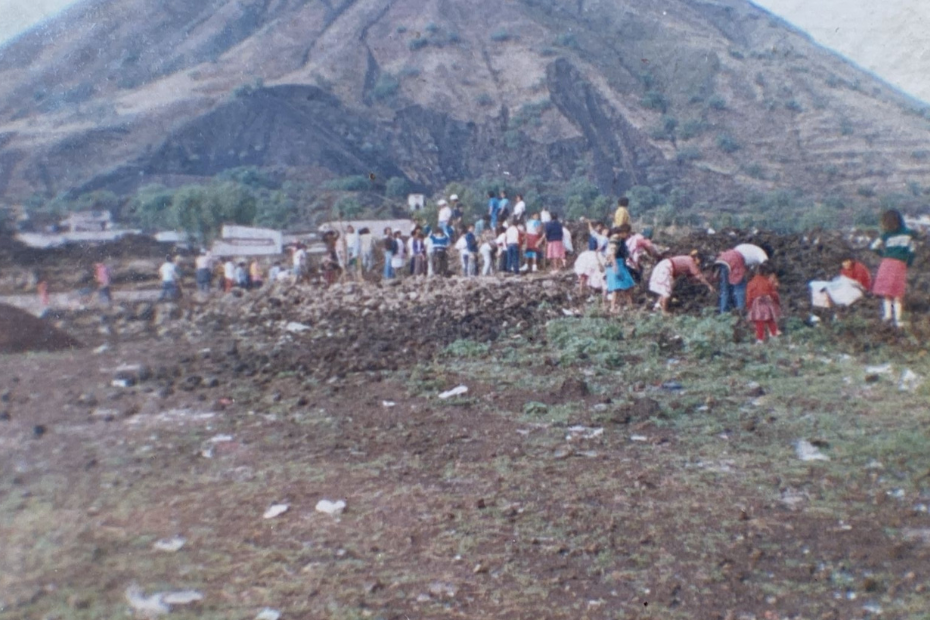How true it is that neurons crackle at the border and that the poor evangelise us!
Miravalles School was born in 1988. In its founding intention was the preference of Jesus and Marcellin for children and young people in need and a commitment to itinerancy.
Four decades earlier, in 1951, the Province of México Central had founded the Escuela México in the Mixcoac neighbourhood, in a marginalised area of the centre of Mexico City, with the aim of offering primary education to the children of poor families. Over time, the phenomenon of “gentrification” occurred in the area, middle-class families bought land and real estate in the neighbourhood and the social composition of the neighbourhood changed.

The Provincial Chapter and the Provincial Council concluded that it was time for an “exodus” and to take a firm step in solidarity with the less favoured. It decided to maintain the educational offer of the School in Mixcoac, but to direct it towards the middle classes and to move to the periphery of Mexico City, to the Iztapalapa district, which in those years saw the growth of poverty belts, made up of migrants and displaced persons, like mushrooms.
A group of Marist Brothers made contact with one of these parachuting zones and began a dialogue with them, proposing the opening of a Marist school that would begin by offering primary education possibilities to the children and would provide support to the colony that was being born on the slopes of the Tetlamanche volcano, beyond the asphalt, without the most basic services.


In a community assembly, the group of settlers welcomed the idea with sympathy and offered a quarter of a hectare of land for the new school, which took the name of the colony: Escuela Miravalles. The name honours its geographical position, from where one can contemplate the immensity of the Anahuac Valley.
In February 1988, the school opened its doors to the children of the neighbourhood; the first year’s enrolment was 148 students in three elementary school groups. Over the years, new school sections have been added and enrolment has increased significantly. At the beginning of the nineties it was the section for children with disabilities, then, at the end of the same decade, the secondary school and finally the Preparatory School in the year 2020. Today the school has 1122 students, of which 98 are boys with special needs.
But the most significant aspect of the history and development of the school is not the numbers, but the commitment to the colony and the model of popular education that it seeks to offer.
The founding community of brothers and the teachers and brothers who came later understood that a fundamental part of their mission was to join in the work and struggles of the neighbourhood to improve their living conditions in favour of decent sewage, electricity, paving, drinking water, health, education, culture and other services. They spared neither time nor initiatives to support the settlers.

Corresponding to this effort, a number of the school’s classrooms and playground were built with the support of parents in weekend “faenas” (community work) that went on for years.
In addition, the educational community has proposed a model of popular education that focuses on five “c “s: cooperation, communication, creativity, critical awareness and care. Every week, children and adolescents dedicate two hours of school time to ecological clean-up work, going out with shovels, brushes and brooms to walk the neighbouring streets in support of environmental projects.
Parents contribute a minimum monthly tuition fee and have agreed to collaborate with 40 kilos of recyclable material per year, to attend monthly assemblies that offer guidance and tools for the education of their children and to give four work tasks, also annually, in favour of the neighbourhood and the school.
We could tell many more stories of selflessness and dedication, but the informative limits of this article invite us to put an end to them.









Today, if you, the reader, who has had the patience to read this line, look around the neighbourhood and ask for the Miravalles School, nobody will be able to give you a reason for it, but if you ask for information about “la Marista”, everybody will tell you where it is.
Three conclusions are shared by the Provincial community of México Central and the local community of Miravalles School in looking back over these thirty-five years of history:
- The history of the Miravalles school is a history of insertion in the neighbourhood.
- The Miravalles school has been a pioneer in a series of pedagogical searches that a good number of schools in the Province have subsequently taken up: the GEM groups (care for children and young people with disabilities), the ecological practices, the pupils’ assemblies.
- We have much to thank God, Mary, Marcellin and the people.
How true it is that the poor evangelise us and that in the peripheries the neurons crackle!
Br. Carlos Martínez Lavín
